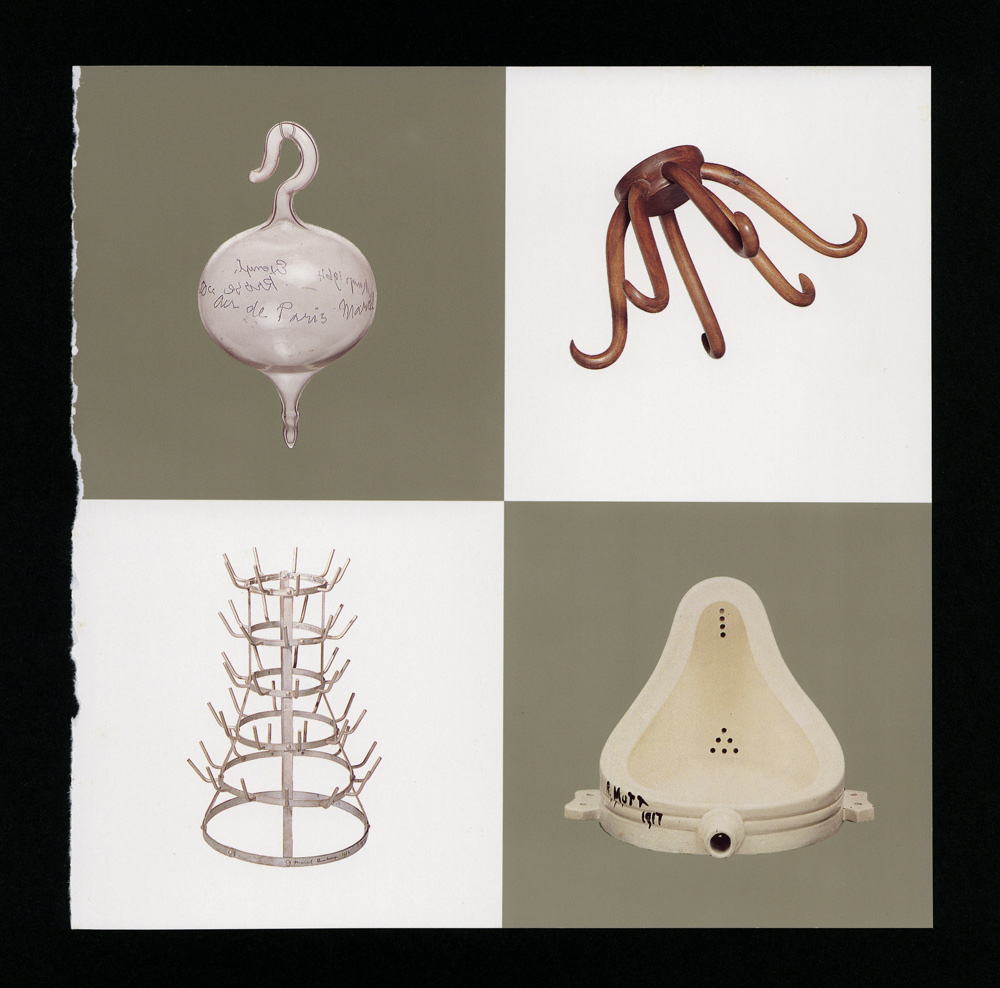
In celebration of the 100th anniversary of Marcel Duchamp’s creation of the iconic readymade work Fountain, an exhibition of Saâdane Afif’s The Fountain Archives opened at the Centre Pompidou in Paris on Monday, January 30.
The archives, still a work in progress, are the product of the so-called “post-conceptual” artist’s effort to collect print appearances of the urinal, first signed “R.Mutt” by Duchamp in 1917, to trace the diffusion of the piece over a century.
At the Pompidou, viewers can find nearly 800 framed pages from magazines, exhibition catalogs, art history textbooks, and more, all containing photographs of the seminal porcelain artwork. The publications from which the pages have been ripped form another archive of their own, exhibited now on bookshelves, emptied of their explicit reference to Duchamp, but speaking to the diversity of contexts into which the readymade has been placed since its original creation.
Afif has been collecting reproductions of Duchamp’s urinal since 2008. As his archive grew in size, it began to attract the attention of publishers, who in turn reproduced the reproductions, introducing a meta aspect to the project. The artist created a second sub-collection in response, Augmented, which gathers print references to his own project.
Page 0608 from The Fountain Archives, Augmented Galeria Mehdi Chouakri (ed.)
“Mehdi Chouakri at FIAC” (2012) Image courtesy the Fountain Archives.
The year 2017 marks the 100th anniversary of Duchamp’s historical gesture, when he bought a porcelain urinal from a sanitary equipment manufacturer, turned it on its side, and signed it with the pseudonym “R. Mutt.”
The gesture first caused a row when he submitted it, anonymously, to the first exhibition of the Society of Independent Artists—an association formed in 1916 by artists including Man Ray and Duchamp himself dedicated to the exhibition of avant-garde artwork. The only category for acceptance into the society’s exhibitions was that an entrance fee be paid, but the directors refused to display Fountain at the Grand Central Palace in New York.
“The Fountain may be a very useful object in its place, but its place is not in an art exhibition and it is, by no definition, a work of art,” said a statement from the society’s board, according to a text written by Sophie Howarth for the Tate Modern.
Duchamp resigned in protest. He also had Fountain defended in the second issue of the Dada periodical Blind Man, where the first photographic reproduction of the work appeared, taken by Alfred Stieglitz at the Dadaist’s request. The image appeared with an article titled “The Richard Mutt Case,” which defended the merits of the readymade:
“Whether Mr. Mutt with his own hands made the fountain has no importance. He CHOSE it. He took an ordinary article of life, placed it so that its useful significance disappeared under the new title and point of view—created a new thought for that object.”
Page 0778 from The Fountain Archives. Hayasaka, Yuko,
“A Guide To Western Art for Appreciation” (transl.) Tokyo, Visual Design Laboratory, 2014. Photo courtesy the Fountain Archives.
While Afif doesn’t have an original copy of the Blind Man in his archives, it was the first of what turned out to be thousands of photographic reproductions of the infamous work. (The porcelain object itself was reproduced as well—17 copies were made in the 1960s, when Duchamp began to gain widespread fame and notoreity, while the original has been lost.) Afif does his best, however, to document the continuing influence that Fountain has on contemporary art and culture.
The archives so far contain nearly 850 publications—by the end of the original Fountain’s centennial year, Afif hopes to reach 1001, the number at which he will cap the project.
Afif, born in 1970 in Vendôme, France, now lives and works in Berlin. In 2009, he won the Prix Marcel Duchamp. His works have been displayed internationally, including at the Tate Modern in London, the Palais de Tokyo in Paris, Documenta 12, the Berlin Biennale, and the Venice Biennale. He is represented by Mehdi Chouakri in Berlin, Xavier Hufkens in Brussels, Raeber von Stenglin in Zurich, and Sommer Contemporary Art in Tel Aviv.
Page 0365 from The Fountain Archives.Åman, Jan, et al. (eds.) De ou par Marcel Duchamp par Ulf Linde Berlin: Sternberg Press, 2013. Photo courtesy the Fountain Archives.
The Fountain Archives are on view at the Centre Pompidou, Paris, from January 30-April 30, 2017.